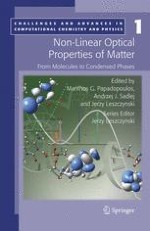Non-Linear Optical Properties of Matter: From Molecules to Condensed Phases attempts to draw together both theory and application in this field. As such it will be of interest to both experimentalists and theoreticians alike. Divided into two parts, Part 1 is concerned with the theory and computing of non-linear optical (NLO) properties while Part 2 reviews the latest developments in experimentation.
Part 1: Surveys the current advances in the computation of the NLO properties of molecules, crystalline solids and nano-particles. It examines the methods employed to compute the properties of both microscopic and macroscopic forms of matter.
Part 2: Covers the recent advances on the NLO properties of organometallic compounds, rotaxanes, glasses, Langmuir-Blodget films, gold and silver nano-particles etc. Strategies to develop novel NLO materials are also discussed along with the Hyper-Rayleigh scattering technique.
